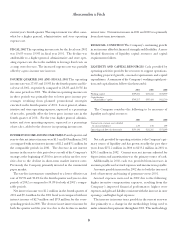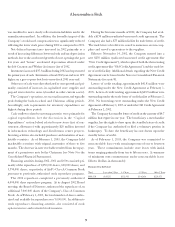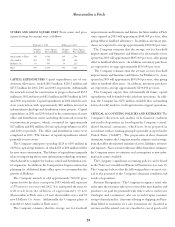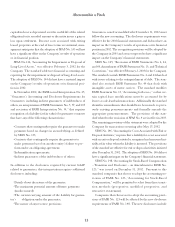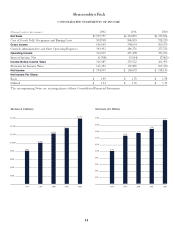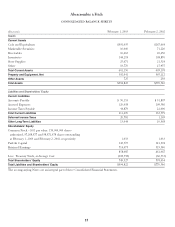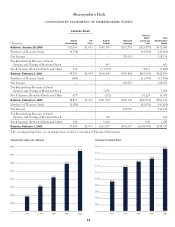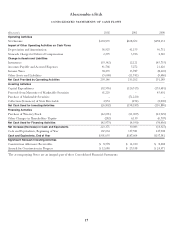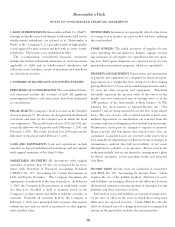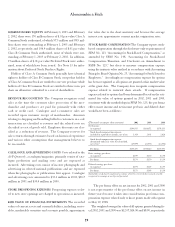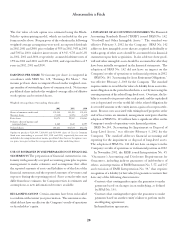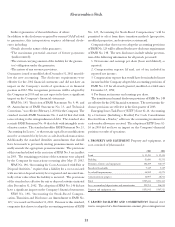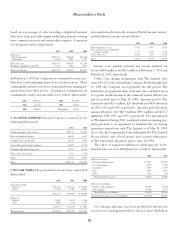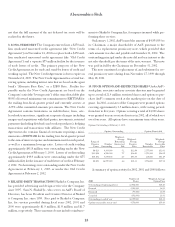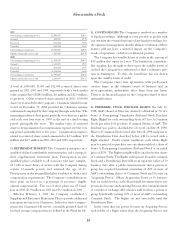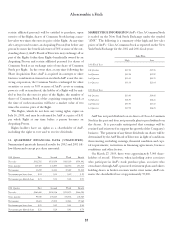Abercrombie & Fitch 2002 Annual Report Download - page 21
Download and view the complete annual report
Please find page 21 of the 2002 Abercrombie & Fitch annual report below. You can navigate through the pages in the report by either clicking on the pages listed below, or by using the keyword search tool below to find specific information within the annual report.
Abercrombie &Fitch
1. BASIS OF PRESENTATION Abercrombie & Fitch Co. (“A&F”),
through its wholly-owned subsidiaries (collectively, A&F and its
wholly-owned subsidiaries are referred to as “Abercrombie &
Fitch” or the “Company”), is a specialty retailer of high quality,
casual apparel for men, women and kids with an active, youth-
ful lifestyle. The business was established in 1892.
The accompanying consolidated financial statements
include the historical financial statements of, and transactions
applicable to, A&F and its wholly-owned subsidiaries and
reflect the assets, liabilities, results of operations and cash flows
on a historical cost basis.
2. SUMMARY OF SIGNIFICANT ACCOUNTING POLICIES
PRINCIPLES OF CONSOLIDATION The consolidated finan-
cial statements include the accounts of A&F. All significant
intercompany balances and transactions have been eliminated
in consolidation.
FISCAL YEAR The Company’s fiscal year ends on the Saturday
closest to January 31. Fiscal years are designated in the financial
statements and notes by the calendar year in which the fiscal
year commences. The results for fiscal years 2002 and 2001 rep-
resent the fifty-two week periods ended February 1, 2003 and
February 2, 2002. The results for fiscal year 2000 represent the
fifty-three week period ended February 3, 2001.
CASH AND EQUIVALENTS Cash and equivalents include
amounts on deposit with financial institutions and investments
with original maturities of less than 90 days.
MARKETABLE SECURITIES All investments with original
maturities of greater than 90 days are accounted for in accor-
dance with Statement of Financial Accounting Standards
(“SFAS”) No. 115, “Accounting for Certain Investments in
Debt and Equity Securities.” The Company determines the
appropriate classification at the time of purchase. At February
1, 2003, the Company held investments in marketable securi-
ties that were classified as held to maturity based on the
Company’s positive intent and ability to hold the securities to
maturity. Primarily all securities held by the Company at
February 1, 2003 were municipal debt securities that mature
within one year and are stated at amortized cost that approxi-
mates market value.
INVENTORIES Inventories are principally valued at the lower
of average cost or market, on a first-in first-out basis, utilizing
the retail method.
STORE SUPPLIES The initial inventory of supplies for new
stores including, but not limited to, hangers, signage, security
tags and point-of-sale supplies are capitalized at the store open-
ing date. Subsequent shipments are expensed except for new
merchandise presentation programs, which are capitalized.
PROPERTY AND EQUIPMENT Depreciation and amortization
of property and equipment are computed for financial report-
ing purposes on a straight-line basis, using service lives ranging
principally from 10-15 years for leasehold improvements and 3-
10 years for other property and equipment. Beneficial
leaseholds represent the present value of the excess of fair
market rent over contractual rent of existing stores as of the
1988 purchase of the Abercrombie & Fitch business by The
Limited, Inc. (now known as Limited Brands, Inc. “The
Limited”) and are being amortized over the lives of the related
leases. The cost of assets sold or retired and the related accu-
mulated depreciation or amortization are removed from the
accounts with any resulting gain or loss included in net income.
Maintenance and repairs are charged to expense as incurred.
Major renewals and betterments that extend service lives are
capitalized. Long-lived assets are reviewed at the store level at
least annually for impairment or whenever events or changes in
circumstances indicate that full recoverability of net assets
through future cash flows is in question. Factors used in the
evaluation include, but are not limited to, management’s plans
for future operations, recent operating results and projected
cash flows.
INCOME TAXES Income taxes are calculated in accordance
with SFAS No. 109, “Accounting for Income Taxes,” which
requires the use of the liability method. Deferred tax assets
and liabilities are recognized based on the difference between
the financial statement carrying amounts of existing assets and
liabilities and their respective tax bases.
Deferred tax assets and liabilities are measured using enact-
ed tax rates in effect in the years in which those temporary
differences are expected to reverse. Under SFAS No. 109, the
effect on deferred taxes of a change in tax rates is recognized in
income in the period that includes the enactment date.
NOTES TO CONSOLIDATED FINANCIAL STATEMENTS
18


